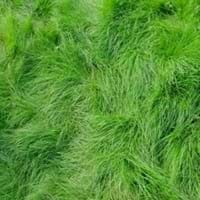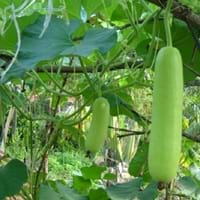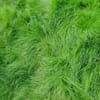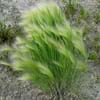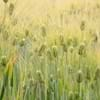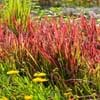Life Span
Perennial
Annual and Biennials
Origin
World/Pandemic, North America, Europe
India, Philippines, Southeast Asia
Types
Lustrous Creeping Red Fescue, Rubra trichophylla, Rubra rubra
Not Available
Habitat
Wide range of ecological site
Moist Soils, Tropical Climate
USDA Hardiness Zone
2-7
5-7
Sunset Zone
A2, A3, 1a, 1b, 2a, 2b, 3a, 3b, 4, 5, 6, 7, 8, 9, 10, 14, 15, 16, 17, 18, 19, 20, 21, 22, 23, 24
A1, A2, A3, H1, H2, 1a, 1b, 2a, 2b, 3a, 3b, 4, 5, 6, 7, 8, 9, 10, 11, 12, 13, 14, 15, 16, 17, 18, 19, 20, 21, 22, 23, 24
Habit
Mat-forming
Vining/Climbing
Minimum Width
Not Available
Flower Color
Not Available
Yellow, Orange, Dark Green
Flower Color Modifier
Bicolor
Bicolor
Fruit Color
Non Fruiting Plant
Yellow, Dark Green
Leaf Color in Spring
Dark Green
Green, Dark Green
Leaf Color in Summer
Light Green
Green, Dark Green
Leaf Color in Fall
Dark Green
Green, Dark Green
Leaf Color in Winter
Tan
Not Available
Leaf Shape
Grass like
Palmate
Plant Season
Spring, Summer, Fall, Winter
Summer, Fall
Sunlight
Full Sun, Partial Sun, Partial shade
Full Sun
Growth Rate
Medium
Very Fast
Type of Soil
Clay, Loam, Sand
Loam, Sand
The pH of Soil
Acidic, Neutral
Neutral
Soil Drainage
Average
Well drained
Bloom Time
Early Summer, Summer, Late Summer
Indeterminate
Tolerances
Not Available
Drought
Where to Plant?
Ground
Ground
How to Plant?
From Rhizomes
Seedlings
Plant Maintenance
Medium
Medium
Watering Requirements
Needs 2-3 times watering per week
Requires watering in the growing season, water on alternate days
In Summer
Lots of watering
Lots of watering
In Spring
Moderate
Moderate
In Winter
Average Water
Average Water
Soil pH
Acidic, Neutral
Neutral
Soil Type
Clay, Loam, Sand
Loam, Sand
Soil Drainage Capacity
Average
Well drained
Sun Exposure
Full Sun, Partial Sun, Partial shade
Full Sun
Pruning
Prune grass to maintain level
Cut out old flower stalks, Prune after flowering, Remove branches that rub together, Remove dead or diseased plant parts
Fertilizers
fertilize in fall
High potassium diluted feed of 5-10-5, Nitrogen, Potassium
Pests and Diseases
Billbugs, Dollar spot, Pythium blight, Red blotch, Red thread, White grubs
Army-worms, Bacteria wilt, Bacterial leaf spot, Blight, Cucumber beetles, Cutworms, Fusarium leaf spot, Leaf rust, Red spider mite, Striped cucumber beetles
Plant Tolerance
Not Available
Full Sun, Salt and Soil Compaction, Shallow soil
Flowers
Insignificant
Showy
Flower Petal Number
Single
Single
Foliage Texture
Fine
Coarse
Foliage Sheen
Matte
Matte
Attracts
Bugs
Bees, Flies, Flying insects
Allergy
Asthma
Hypoglycaemic Coma, Irregular Heart Rhythm
Aesthetic Uses
Ground Cover
Decorating walls, Ornamental use
Beauty Benefits
Not Available
Anti-ageing, Making cosmetics
Environmental Uses
Erosion control, Wildlife
Food for animals, Insect Repellent
Medicinal Uses
No Medicinal Use
Anti-fungal, Blood disorders, Culinary Usage, Diabetes, Gastrointestinal disorders, Laxative, Nutritive, Weight loss
Part of Plant Used
Whole plant
Fruits
Other Uses
Used as Ornamental plant
Cosmetics, Culinary use, Repellent, Used in making musical instruments
Used As Indoor Plant
No
No
Used As Outdoor Plant
Yes
Yes
Garden Design
Edging, Groundcover, Lawns and Turf, Mixed Border, Rock Garden / Wall
Dried Flower/Everlasting, Vine
Botanical Name
FESTUCA rubra
Lagenaria siceraria
Common Name
Red Fescue
calabash, bottle gourd, white-flowered gourd, opo squash
In German
Rotschwingel
Flaschenkürbis
In French
fétuque rouge
Lagenaria siceraria
In Spanish
festuca roja
Lagenaria siceraria
In Greek
κόκκινο Φεστούκα
Τσότρα
In Portuguese
Red festuca
Cabaça
In Polish
Kostrzewa czerwona
Tykwa pospolita
In Latin
Red Fescue
utrem cucurbita
Phylum
Magnoliophyta
Magnoliophyta
Class
Liliopsida
Magnoliopsida
Order
Cyperales
Cucurbitales
Family
Poaceae
Cucurbitaceae
Clade
Angiosperms, Commelinids, Monocots
Angiosperms, Eudicots, Rosids
Tribe
Not Available
Not Available
Subfamily
Not Available
Papilionoideae
Number of Species
Not Available
Importance of Red Fescue and Bottle Gourd
Want to have the most appropriate plant for your garden? You might want to know the importance of Red Fescue and Bottle Gourd. Basically, these two plants vary in many aspects. Compare Red Fescue and Bottle Gourd as they differ in many characteristics such as their life, care, benefits, facts, etc. Every gardener must at least have the slightest clue about the plants he wants to plant in his garden. Compare their benefits, which differ in many ways like facts and uses. The medicinal use of Red Fescue is No Medicinal Use whereas of Bottle Gourd is Anti-fungal, Blood disorders, Culinary Usage, Diabetes, Gastrointestinal disorders, Laxative, Nutritive and Weight loss. Red Fescue has beauty benefits as follows: Not Available while Bottle Gourd has beauty benefits as follows: Not Available.
Compare Facts of Red Fescue vs Bottle Gourd
How to choose the best garden plant for your garden depending upon its facts? Here garden plant comparison will help you to solve this query. Compare the facts of Red Fescue vs Bottle Gourd and know which one to choose. As garden plants have benefits and other uses, allergy is also a major drawback of plants for some people. Allergic reactions of Red Fescue are Asthma whereas of Bottle Gourd have Hypoglycaemic Coma and Irregular Heart Rhythm respectively. Having a fruit bearing plant in your garden can be a plus point of your garden. Red Fescue has no showy fruits and Bottle Gourd has showy fruits. Also Red Fescue is not flowering and Bottle Gourd is not flowering . You can compare Red Fescue and Bottle Gourd facts and facts of other plants too.
